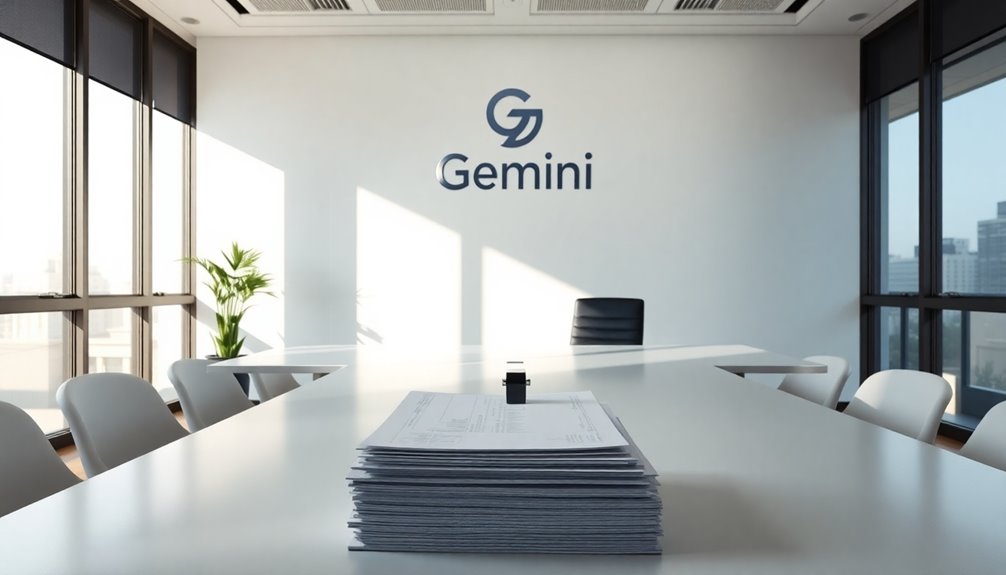You've likely heard about Gemini's bold stance on hiring MIT graduates. By insisting that the university cut ties with Gary Gensler, they're igniting a heated debate within the crypto community. This policy raises questions about the balance between innovation and regulatory scrutiny. But what does this mean for the future of hiring practices and the relationship between academia and the crypto industry? The implications are worth exploring further.

In a bold move that has sparked debate across the crypto community, Gemini has decided not to hire graduates from MIT, citing the university's ties to former SEC Chair Gary Gensler as the reason. This decision isn't just limited to full-time positions; it also extends to their internship program, meaning no MIT students will be considered for summer internships.
The backdrop of this policy stems from a $21 million fine that Gemini paid to settle SEC claims related to its Gemini Earn program, raising tensions between the crypto exchange and regulatory oversight. Furthermore, this hiring freeze reflects a broader frustration within the crypto community regarding Gensler's actions while at the SEC.
The crypto community is now divided over Gemini's stance. Some industry figures, like Erik Voorhees, support the boycott, suggesting that other companies should follow suit to make a statement against what they perceive as overreach by regulators. Yet, many critics argue that this policy unfairly targets students who'd no part in the disputes with the SEC.
Notably, some voices in the community recommend a more nuanced approach, such as targeting students enrolled in Gensler's classes rather than a blanket ban on all MIT graduates.
Gensler's return to MIT as a professor focusing on AI, finance, and regulatory policy only fuels this controversy. His previous role as SEC Chair saw aggressive enforcement actions against several crypto companies, including heavyweights like Coinbase and Binance.
Known for his strict regulatory stance, Gensler often classifies many cryptocurrencies as securities, which has raised concerns about the future of innovation in the space. Critics fear that his presence at MIT might stifle blockchain innovation and open discourse.
Meanwhile, some MIT alumni express embarrassment over Gensler's return, feeling it undermines their institution's reputation for fostering innovative thought. This situation illustrates the ongoing tensions between the crypto industry and regulatory bodies like the SEC, highlighting how companies might rethink their hiring policies in relation to universities with ties to regulatory figures.
As for MIT, the decision to rehire Gensler shows its commitment to academic freedom and diverse perspectives. The fallout from Gemini's hiring policy could influence how other organizations interact with both regulatory figures and academic institutions in the future.
In a landscape where innovation often clashes with regulation, the crypto community's ongoing response will likely shape future collaborations and policies related to these complex relationships.









